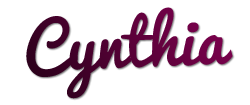I hate purchasing something and only having one way to use
it, don’t you?
Don’t get me wrong; there are some things that ONLY have one
way to use it. For others, however, there is often more than one way to utilize it.
I like knowing that I am getting a lot of “bang for my buck”.
Today I am sharing a forever freebie in my store that is
perfect for the month of October.
Click here to download these October Early Finisher Task Cards, and then come back here to read different ways to use them in your
classroom during the month of October.
Print and prepare your free task cards by printing on
cardstock, laminating for durability, and then cutting them out.
You can store them in a Ziploc bag. My favorite way to store all of the
months is by using the little expandable plastic pockets you can purchase
at Dollar Tree for only one dollar.
I purchased a few of these, and I stored all of my task cards for the year in these.
I placed these in a plastic basket in my cabinet. I used task cards weekly in my classroom, so this is a great storage organization that worked well through the years.
Early Finisher Activities
Place these task cards in a small basket on a shelf that is
easily accessible to students. When a student finishes his or her work, instead of asking you what to do next, the student will get a piece of
paper and a task card.
Morning Work
Display one of the task cards using a projector system. When students arrive in your classroom, all
students will complete the same activity.
If the activity is longer than time allows, have students complete the
work during any free time throughout the day.
Students can use spiral notebooks labeled “Morning Work” and complete
one activity each day.
Writing
There are many opportunities to get your students to write
creatively. Use a card during your
writing segment, and have all students use the same writing prompt. Encourage students to read their finished
products with the class, in small groups of students, or with partners. Make it really fun for the students by completing the writing prompt also and then reading yours to the entire class!
Center Work
Choose one of the task cards for a center activity. Copy the card by making it large and displaying it so that all of the students in the center can see it. Provide needed materials to complete. For instance, if you use the spiders facts and
opinions, add some nonfiction books to the center for students to read and use
for facts.
Art Activity
Choose a task card that includes an art activity. Provide art materials for students to
use. Display the finished product on a
bulletin board, your door, or in the hallway to share with others.
No matter how you use these task cards in your classroom, your
students will be using their creative juices to write, draw, create, list,
design, complete math, learn a little about special days of the month, and so
much more!
If you love these task cards, you can find the rest of the months for ONLY $1 each!
How do you plan on using them in your own classroom? I would love to know! Just comment below!




.png)



.png)

.png)









.png)






.png)
.png)